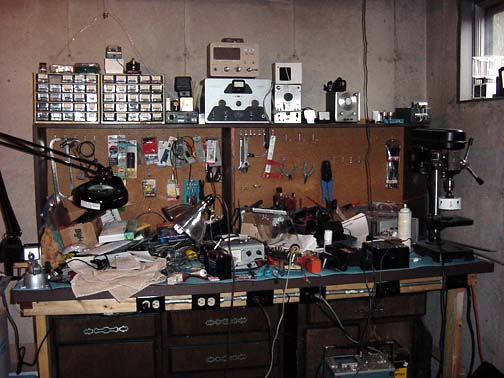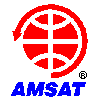


I entered the Air Force about three years after I got my license. I learned most of my electronics skills in the Air Force, but I didn't have much time to do any operating for the first few years anyway. I upgraded to Advanced class in 1972 while stationed in Maine and changed my callsign to KA1BFK. I also held the call WA1VID as a secondary station license. From 1970 - 1980 I operated from Maine on the HF bands and on six meters. From there we moved to Northern California where I operated as KA1BFK/6. From 1982 - 1984 I operated as HL9SM while spending a tour in Taegu, Korea with the Air Force. It sure is a lot different operating overseas with a DX call. I returned from Korea in 1984 and came to Colordo, obtaining the callsign KDØSU. In 1992 my friend Bill, K4YCD convinced me to upgrade to Extra Class. His ulterior motive was for me to help give Ham Radio exams. The hard part for me was the code, but I sure have enjoyed using it since then. Kind of like going back to your roots. My primary radio interests are building equipment, VHF/UHF operation, portable operation and public service.
One of my interests is QRP (Low power - less than 5 watts) operation. It is a real challenge! Also, many QRP operators build their own equipment which a part of the hobby I really enjoy. Check out my QRP page to see some of the things I have built.
A couple of years ago I obtained my vanity call KØSU!! What a kick to have that kind of call after all these years. Really nice on CW!! My friend Larry, KØRS convinced me to apply for it and I sure am glad he did. Look for me on 7.040 MHz, 14.060 MHz or 21.060, my usual QRP hangouts.
Here are a few Ham Radio links you may want to check out:

 One of my other interests that I have recently revived is Ham Radio Satellites. I don't have an exotic station. I
use the Icom 706 to receive. RS-13 on 10 meters, and an old FT-726 to uplink on 2 meters. Even the antennas are
pretty mundane. A Butternut vertical for HF and a Cushcraft Ringo for VHF. While you don't have to worry about
propagation conditions using the satellite, you do have to be on when they are in sight if you want to make any contacts!
Take a look at the AMSAT link above if you want to find more information.
One of my other interests that I have recently revived is Ham Radio Satellites. I don't have an exotic station. I
use the Icom 706 to receive. RS-13 on 10 meters, and an old FT-726 to uplink on 2 meters. Even the antennas are
pretty mundane. A Butternut vertical for HF and a Cushcraft Ringo for VHF. While you don't have to worry about
propagation conditions using the satellite, you do have to be on when they are in sight if you want to make any contacts!
Take a look at the AMSAT link above if you want to find more information.

